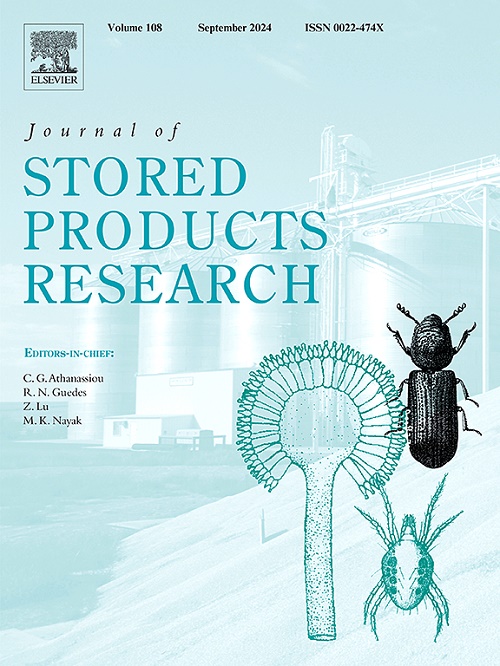Evaluating the population dynamics of a maize weevil under varying initial population sizes
IF 2.7
2区 农林科学
Q1 ENTOMOLOGY
引用次数: 0
Abstract
Maize is the most widely cultivated crop worldwide, and weevils, Sitophilus zeamais. Boisduval 1835 (Coleoptera: Curculionidae), are recognized as a major pest of stored maize. In this study, we investigated the population dynamics of weevils under varying initial population sizes. We used three initial population sizes (64, 128, and 256 individuals), each with identical maize availability (70 g), and replicated each initial population size three times. Populations were counted weekly over 12 weeks. Sigmoidal growth models, including three-phase, logistic, Gompertz, and Baranyi models, were fitted to each population. Model selection was conducted using the Akaike Information Criterion. Additionally, we assessed the influence of initial population size on population growth parameters: λ (lambda), μ (mu), and carrying capacity (K), using a one-way ANOVA. The Gompertz model best fit nearly all populations. Lambda (λ) varied significantly among initial population sizes, with the smallest populations showing the shortest lambda duration (approximately 4.247 weeks) and the largest populations exhibiting the longest duration (approximately 5.525 weeks). No significant differences were found in μ (mean μ = 0.197) or carrying capacity (K = 2.619, approximately 416 individuals) across initial population sizes. These findings underscore the role of density dependence in weevil populations, with a notable lag phase effect. Furthermore, the lack of impact of initial population size on μ indicates that small initial populations can achieve carrying capacity at the same rate as larger populations. This study offers valuable insights for weevil pest management in maize production.
求助全文
约1分钟内获得全文
求助全文
来源期刊
CiteScore
5.70
自引率
18.50%
发文量
112
审稿时长
45 days
期刊介绍:
The Journal of Stored Products Research provides an international medium for the publication of both reviews and original results from laboratory and field studies on the preservation and safety of stored products, notably food stocks, covering storage-related problems from the producer through the supply chain to the consumer. Stored products are characterised by having relatively low moisture content and include raw and semi-processed foods, animal feedstuffs, and a range of other durable items, including materials such as clothing or museum artefacts.

 求助内容:
求助内容: 应助结果提醒方式:
应助结果提醒方式:


